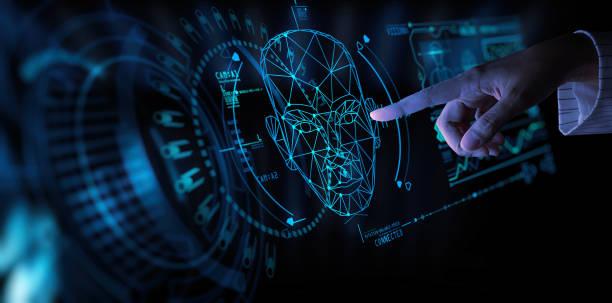Online Facial Recognition Technology – Latest Industry News
One of the most well-known online facial recognition websites is once again in hot waters over breaking legal prohibitions. Here’s what’s happening in 2023
Online facial recognition technology is advancing at a swift pace. The original concept of facial verification technology comes from Turk and Pentland who worked on face detection in images in the early 1990s. Today, many years have passed by, yet the technology is still evolving.
Modern technology and online facial recognition
New modern computer technologies such as artificial intelligence and machine learning have been changing face detection systems in the past decade. However, these technologies themselves are experiencing new experiments every day. In the same way, online facial recognition is regular;y experimented with. Additionally, face recognition being subjected to human rights and data privacy concferns is also fueling the industry evolution.
From India to the EU
Early 2023 has seen a lot going on in the online facial recognition domain.
Let’s dive into the latest news from the industry.
India’s Kolkata Airport becomes the fourth Indian airport to set up AI face recognition
While the TSA is still dealing with its pilot program for online facial recognition at airports, India just took a step further. India’s Kolkata Airport, also known as the Netaji Subhas Chandra Bose International Airport, started trials for facial verification in February 2023. During the trial period, over 9000 passengers utilized the technology. This was primarily during airport onboarding processes. After looking at the success of the trial period, as well as other Indian and international airports, the Kolkata Airport then formally introduced online facial recognition.
Airport representatives have introduced online facial recognition technology for the sake of certain goals, according to official statements.
These goals include:
- The reduction of passenger onboarding time
- The reduction of paper usage at airports
- To improve airport security
- To offer better airport management infrastructure to the public
Currently, three other airports in India utilize face recognition for their services.
Login.gov and government agencies at odds with federal security guidelines over face verification
WIRED journalism recently reported a case of massive potential federal security breaches.
In 2021, Dave Zvenyach was the director of a specialized group under the General Services Administration (GSA). The group was tasked to improve the digital systems of the US government agencies. One of these tasks was to improve and regulate digital security systems.
Federal security guidelines demand access to federal data only after in-person or online authentication through biometrics. At the time, federal agencies were using Login.gov for online facial recognition.
Dave, however, did not find the benefits offered by online facial recognition worth it in comparison to the potential discriminatory effects and thus called it off. By doing this, GSA, for a short period, remained noncompliant with the NIST laws. Additionally, 22 government agencies were still paying for and using Login.gov. This landed the GSA in hot waters on grounds of misconduct.
A new director was later appointed. However, GSA is still avoiding online facial recognition. Additionally, NIST is also reviewing its security requirements.
EU delays online facial recognition at the Port of Dover
The authorities were supposed to set up an automated IT system called the Entry/Exit System (EES) at the Port of Dover by May 2023.
The EES or the Entry/Exit System is an automated IT system that was supposed to be set up at the Port of Dover by May 2023.
The EES system aims to register individuals traveling to the European Union from non-EU regions. It requires collection of biometric data including fingerprints and online facial recognition patterns for every individual. The EES has to collect this data every three years to maintain ongoing security.
Earlier this year, however, EU-LISA, the EUs IT agency, reported a delay in the execution of their online facial recognition and other plans. The statement read the plan as being “no longer achievable” owing to contractor issues.
The new goal is to set the technology in place by the end of 2023. EU-LISA is now actively preparing the new timetable.
What is face recognition doing with dead people’s pictures?
A recent investigation uncovered an online facial recognition website producing pictures of long-dead individuals. The face scanner in question is PimEyes. PimEyes was scrapping off images from a genealogy website. Tadvertises itself as an online face recognition service to scan for people who look alike on the internet through face match online. PimEyes is only to collect data from publicly accessible and permitted pictures.
However, PimEyes was accessing data from Ancestry.com, a popular website for family histories and creating family trees.
Ancestry.com strictly prohibits external parties from scraping data off their website. However, users who choose to make their information public have pictures of their deceased relatives visible to all on the site.
PimEyes, in spite of Ancestry.com’s prohibition, was collecting this data.
According to the director of PimEyes, Giorgi Gobronidze, this was a technical issue and PimEyes only intends to collect permissible data. PimEyes has also been accused of stalking, abuse, and collecting children’s pictures off social media through online facial recognition, in the past. As per Gobronidze, these online facial recognition concerns predate his becoming the director and the company now has new policies set in place.
PimEyes is still under hot waters and has also been legally challenged multiple times in the past as well.




